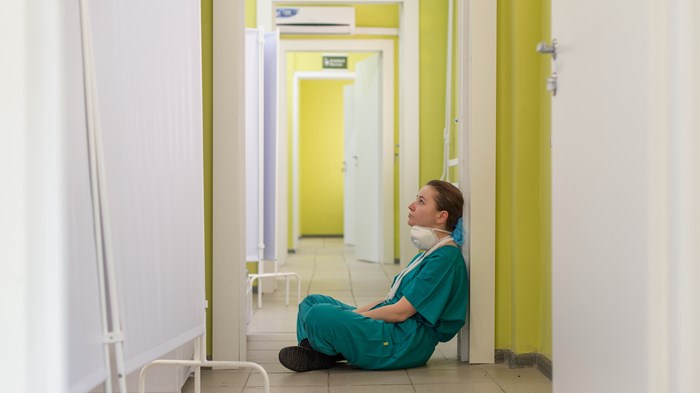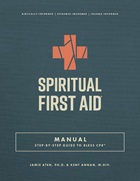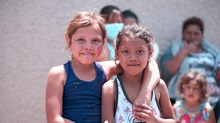Is Anyone Taking Care of the Wounded Healers?

Burnout. Compassion fatigue. Vicarious trauma. These words are often used to describe those in helping professions whose experiences weary them to the point of giving up. However, these terms further stigmatize those attempting to be Better Samaritans. The blame for any less than a sturdy stance in the presence of suffering is laid at the feet of the individual helper; it’s a character flaw, or a response to an unintended bit of friendly fire that wasn’t meant to wound. The helper is seen as perhaps not cut out for the job—they’re too soft or weak.
In today’s world of the pandemic, natural disasters, and mounting refugee crises, humanitarian workers are crucial to our collective survival. Increasingly, the issues faced at work are also seen at home—nurses care for the sick while worrying about spreading infection to their family, firefighters battle blazes while their homes are in the path of wildfires, and justice organizations help immigrants while wondering if their funding is secure. News reports reveal that anxiety, stress, and depression are increasing while those in helping fields are leaving the workforce in alarming numbers.
The wounded healer isn’t a new concept. But as we grapple with the enormity of present needs, it’s time to reframe how we identify and heal these wounds. Rather than naming them as individual hurts, they must be seen as affecting a body—a collective. Their root cause isn’t an inability of one individual to deal with others’ traumas, but the absence of recognition that despair results from failure on the part of trusted leaders and community members to acknowledge the lived experience of the helper. Likewise, the remedy is not the solitary journey of an individual engaged in self-care, but rather a communal reshaping of the places inflicting injury onto the healers.
A better term to describe the situation of the weary worker is moral injury. Moral injury is the profound dissonance we feel when what we hold as central values guiding our actions are seemingly contradicted in the conduct of our work. Shame, guilt, and workplace errors result from moral injury. Initially attributed to veterans dealing with the aftermath of war, the term now is used more generally. Moral injury displaces our trust in leadership—military commanders, public health experts, faith leaders, or government officials. At its worst, moral injury makes us distrust God. For example, the timeless question of how a good God can let a child suffer may particularly resonate with child abuse specialists.
Currently, moral injury is seemingly inflicted by those we are trying to help. Protesters scream at health care personnel, when just weeks before, they were cheering them on from city windows. Educators try to provide safe learning environments while parents picket guidelines for their children. This assault on the would-be Samaritan by the presumed one in need adds fresh injury to unhealed wounds.
Recognition of moral injury as a cause of workplace stress is increasing, but antidotes for its healing are poorly understood. Destigmatizing moral injury by naming moral anguish and moral grief as appropriate responses to such wounds is a step toward healthy resolution. Anguish and grief, though, cannot be permanent states.
A new therapeutic approach is needed. All physical healing in the human body is a collective process dependent upon a diverse array of individual components collaborating to provide the right resources for the space to heal with restored function. So, too, our collective body must come together to heal the wounds of moral injury. The injured Samaritan needs to be met with others who recognize the injury, provide the resources, pull together the wound edges, and allow healthy scars to form so function can go forward. Ideally, restoration occurs such that all band together in reaching for the good they cherish, perhaps more fit for the work now than they were previously.
How does this take practical shape? There is much to learn. A start is for leaders to recognize and name the injuries experienced. Some hospitals practice “reflection rounds” where staff can visit the wounds of the day, giving voice to their feelings in the company of their peers. Churches may offer services of lament—these can be fashioned with particular emphasis on humanitarian helpers and their losses. Where two or three are gathered, Christ offers his presence—those in these vulnerable settings can be provided real partnership in their work rather than relying on individual approaches. Spiritual care fully integrated into the workplace setting can offer a holistic response to the wounds of the day. Tenderly showing community members our wounds is a humanizing process that may pull us back to each other across our divides.
Better Samaritans are often the walking wounded. May we bind ourselves more fully into each other’s needs so that none are outside of another’s care.
Jennie A. McLaurin (MD, MPH, MA) is a Senior Fellow for Public Health Integration and Innovation at the National Association of Community Health Centers. Her recent book, Designed to Heal: What the Body Shows Us about Healing Wounds, Repairing Relationships, and Restoring Community, examines ways we can mirror the body’s healing processes as we engage with our social wounds.
The Better Samaritan is a part of CT's
Blog Forum. Support the work of CT.
Subscribe and get one year free.
The views of the blogger do not necessarily reflect those of Christianity Today.






















